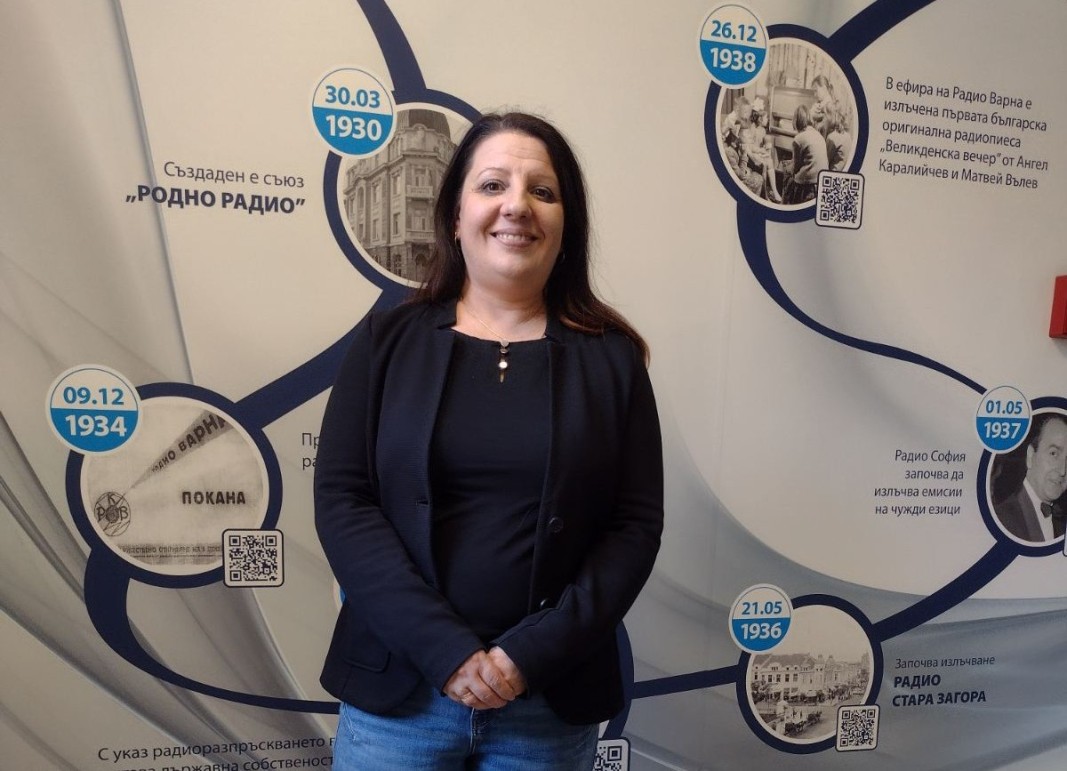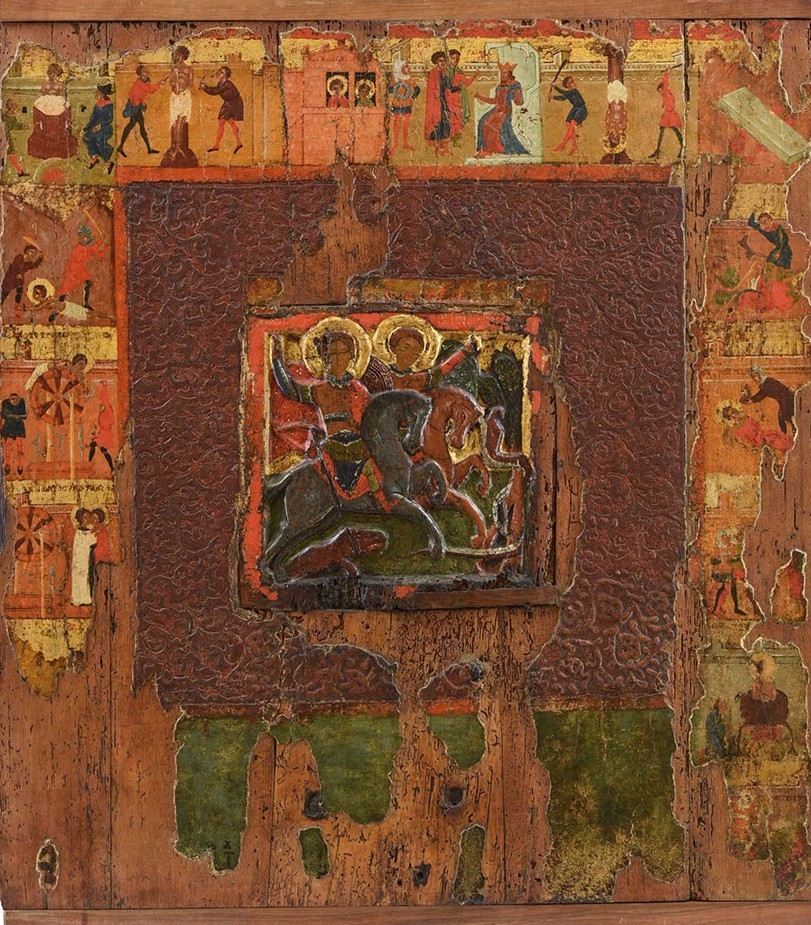In popular belief, St George is the younger twin brother of St Demetrius. Ethnographers describe them as Christianised images of mythical heroes - strong, agile and swift. They are victorious, leaping over mountains and seas, releasing the waters, freeing enslaved maidens and slaying dragons and enemies of the faith. They open and close the heavens to bring rain on St George's Day or snow on St Demetrius' Day, thus ensuring fertility. The earliest preserved icon in Bulgaria depicts Sts. George and Demetrius. It is kept in the National Ecclesiastical and Archaeological Museum of the Holy Synod of the Bulgarian Orthodox Church.
"The icon of Sts George and Demetrius with scenes from their lives is one of the most reproduced icons in Bulgaria, which has participated in almost all international exhibitions," says Natalia Nedelcheva, a restorer at the museum. "Our latest research shows that it is the oldest icon in our museum and probably in Bulgaria. It was brought here in 1928 by Archpriest Ivan Goshev from the Church of the Holy Mother of God in the town of Sozopol. He found it in the women's section of the church, among many other objects and decaying wooden planks and decided to take it to Sofia. After it was cleaned, it was discovered that the icon is a composite piece, made up of two panels inserted into each other."

It is the composite structure of the icon that poses a challenge to its precise dating. Its oldest part is a roughly carved relief of the two saints on horseback on an almost square wooden panel. This panel was later set in a much later painted frame depicting scenes from the life and martyrdom of the two saints.
What's particularly interesting is the transition the medieval artist created between the central icon and the frame. To the uninitiated, it may appear that a fine piece of leather has been inserted between the frame and the saints. In fact, the effect was achieved by applying several layers of gesso to the wooden base, followed by additional relief work.

"I would like to point out that this type of depiction is not found elsewhere in Bulgaria - at least I am not aware of any other similar relief image of Sts. George and Demetrius, or even of other saints, which is also painted. The iconographic canon is respected: St George is depicted on a white horse and St Demetrius on a red one. A particularly striking detail is the creature slain by Saint George - some identify it as a hippopotamus or a crocodile. It doesn't resemble the typical dragon we're used to seeing in traditional icons of Saint George. As for St Demetrius, he slays a serpent, which symbolises evil. In many depictions he is shown killing a man who, according to Greek tradition, represents Tsar Kaloyan, the alleged attacker of Thessaloniki. However, the man is generally a symbol of evil and doesn't necessarily represent Kaloyan. In Bulgarian tradition, the figure is sometimes interpreted as Emperor Basil the Great," says the restorer with a smile.
An interesting question is why these two particular saints are depicted together. One possible explanation is rooted in traditional agrarian customs: The feast of St George in May marks the beginning of the active agricultural season, while the feast of St Demetrius in October traditionally signals its end.
"The idea of the saints marking the beginning and end of seasonal cycles is quite interesting. I can't say how well founded it is, but the two did live at about the same time. In fact, St George was martyred on 23 April 305 and St Demetrius on 26 October 306. Perhaps this is the real link between them - both were martyrs for the Christian faith who endured brutal torture. During the reign of Emperor Diocletian (284-305), Christians were severely persecuted, and St George in particular suffered immensely. The later scenes around the icon depict episodes of his torture," explains Natalia Nedelcheva.

The fact that the icon dates back to at least the 11th century is indicated by the depiction of the saints as horsemen.
"Before that time they were depicted sitting and holding spears. Interestingly, the horsemen are shown without stirrups - a rarity in the Middle Ages - suggesting a continuation of an ancient tradition, such as that found on votive reliefs of the Thracian horseman Heros."
Unfortunately, the discoverer of the icon found it out of its compositional context and iconographic message. We cannot say who commissioned the image, but he certainly needed the protection of these two heavenly warriors. It is possible that the patron was also a warrior. The fact that the oldest part of the icon was placed in a new frame testifies to its exceptional value and sacredness in the eyes of its owners.
In today’s world, where material values overshadow the spiritual, reflections on the salvation of souls somehow remain in the background. The constant race against time and the stream of daily tasks muffle the voice of the soul, which struggles to..
In 1018, after half a century of struggle, the First Bulgarian Empire was conquered by Byzantium. Despite the many uprisings of the Bulgarians, the power of Constantinople lasted for nearly two centuries. In the autumn of 1185 or the..
On 19 October, Bulgarians commemorate St Ivan Rilski, also known as St John of Rila, who is considered the country’s heavenly protector. He founded the Rila Monastery, which is the largest and most influential spiritual centre in Bulgaria. Ivan..

+359 2 9336 661
